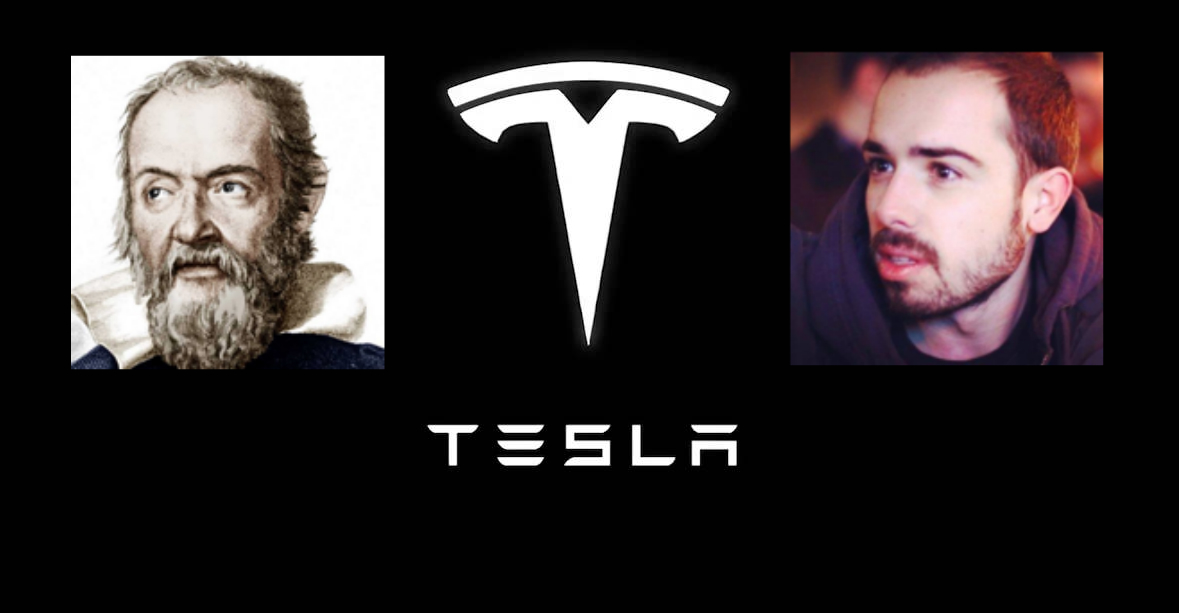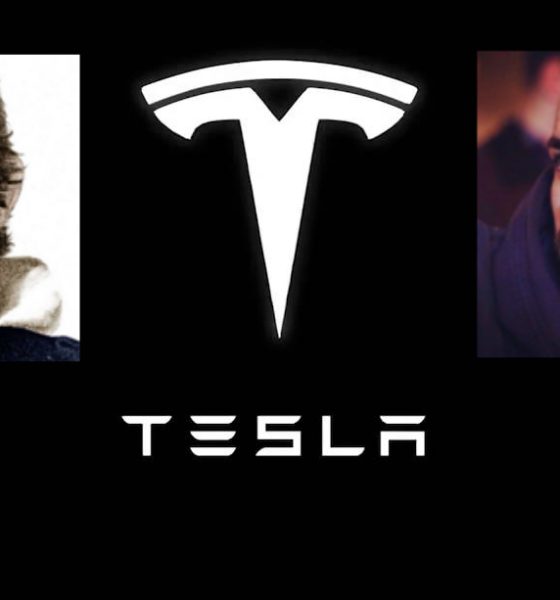

Investor's Corner
Tesla short-seller and TSLA bull face off in classic Bull vs. Bear debate
The Quoth the Raven podcast recently hosted a debate between notable Tesla bear and SeekingAlpha contributor Montana Skeptic and Tesla bull and YouTube host Galileo Russell. Over the hourlong session, both bull and bear discussed issues from Tesla’s financial status, competition from other carmakers, and the company’s future.
MontanaSkeptic1 is an outspoken Tesla critic and a supporter of the bear thesis against the company. An interview with QTR on Seeking Alpha states that Montana has a JD from Yale Law School and manages a $1 billion portfolio. After graduating from Yale, Montana has 30 years experience as a trial lawyer. Montana also notes that he did not take a bearish stance on Tesla from the start. Rather, he states that after reading the company’s filings, he was reminded of Enron, an American energy, and commodities company that went defunct in 2001 after a scandal caused by accounting fraud.
Galileo Russell, on the other hand, is 25 years old but is a self-confessed “finance geek” who has a bullish stance on Tesla. Galileo studied Finance & Entrepreneurship at New York University – Leonard N. Stern School of Business. He currently runs a YouTube channel called HyperChange TV, where he discusses stocks such as TSLA, SNAP, AMZN and other tech companies. Galileo first made waves after he predicted Amazon’s acquisition of Whole Foods months before it was announced, but more recently rose to fame after having 23 minutes of airtime with Elon Musk during Tesla’s Q1 2018 earnings call.
The debate between the Tesla bull and bear adopted a structured format, with Montana and Galileo getting an equal amount of time to state their case for a particular topic. The hourlong debate started with a discussion on whether Tesla’s CapEx would be sufficient for the company’s future projects like the Model Y, Tesla Semi, Solar Roofs and its other upcoming products, followed by Tesla’s market share and sales in the United States. Elon Musk’s behavior on social media was also discussed. During these rounds, each side presented a number of compelling arguments, with Montana Skeptic pointing out Tesla’s losses every quarter and Galileo arguing that becoming a profitable car maker requires a heavy time investment. Both reached a consensus that Elon Musk should be more restrained on Twitter.
Ultimately, however, the Tesla bull focused on the long-term prospects of Tesla, as well as the potential of the company in the future, while the bear case is founded on skepticism that Tesla could deliver a $35,000 Model 3, the China Gigafactory, and compete with profitable automakers that have a proven history of manufacturing at scale. The final arguments of Montana and Galileo summed up their stance on the electric car maker.
“I think Tesla is just extraordinarily weak. It lives from capital raise to capital raise. But for a capital raise, it is always on the brink of insolvency. I think that other automakers have a huge advantage. They have a portfolio of products, and those products are largely profitable, and the fact that they are compelled to make EVs that don’t make economic sense, and would never be bought other than as niche performance products, absent huge subsidies. That makes a huge difference. They would be able to outpace Tesla. The interior of the Model 3 has become tired. It was never all that luxurious, and I think it won’t be the aspirational car much longer, especially when these other cars hit the market, and this is happening,” Montana said.
“If you see Tesla’s business unfold and that’s why if you compare them to all the old metrics and look at how much money they’re losing now, you’ve missed the entire story because you’re failing to appreciate just how rapidly Tesla is growing. This is a Silicon Valley company. Software is eating the world. Software is eating every single aspect and niche of the way we build cars, what’s in cars, how they run, how we interact with our cars. This is a totally, fundamentally different set of skills than building an internal combustion engine,” Galileo said.
Listen to the full Montana Skeptic vs. Galileo Russell debate in a recording of the Quoth the Raven podcast below.
https://www.youtube.com/watch?time_continue=190&=&v=LqKEP6j0qe0

Investor's Corner
Tesla stock closes at all-time high on heels of Robotaxi progress

Tesla stock (NASDAQ: TSLA) closed at an all-time high on Tuesday, jumping over 3 percent during the day and finishing at $489.88.
The price beats the previous record close, which was $479.86.
Shares have had a crazy year, dipping more than 40 percent from the start of the year. The stock then started to recover once again around late April, when its price started to climb back up from the low $200 level.
This week, Tesla started to climb toward its highest levels ever, as it was revealed on Sunday that the company was testing driverless Robotaxis in Austin. The spike in value pushed the company’s valuation to $1.63 trillion.
Tesla Robotaxi goes driverless as Musk confirms Safety Monitor removal testing
It is the seventh-most valuable company on the market currently, trailing Nvidia, Apple, Alphabet (Google), Microsoft, Amazon, and Meta.
Shares closed up $14.57 today, up over 3 percent.
The stock has gone through a lot this year, as previously mentioned. Shares tumbled in Q1 due to CEO Elon Musk’s involvement with the Department of Government Efficiency (DOGE), which pulled his attention away from his companies and left a major overhang on their valuations.
However, things started to rebound halfway through the year, and as the government started to phase out the $7,500 tax credit, demand spiked as consumers tried to take advantage of it.
Q3 deliveries were the highest in company history, and Tesla responded to the loss of the tax credit with the launch of the Model 3 and Model Y Standard.
Additionally, analysts have announced high expectations this week for the company on Wall Street as Robotaxi continues to be the focus. With autonomy within Tesla’s sights, things are moving in the direction of Robotaxi being a major catalyst for growth on the Street in the coming year.
Elon Musk
Tesla needs to come through on this one Robotaxi metric, analyst says
“We think the key focus from here will be how fast Tesla can scale driverless operations (including if Tesla’s approach to software/hardware allows it to scale significantly faster than competitors, as the company has argued), and on profitability.”

Tesla needs to come through on this one Robotaxi metric, Mark Delaney of Goldman Sachs says.
Tesla is in the process of rolling out its Robotaxi platform to areas outside of Austin and the California Bay Area. It has plans to launch in five additional cities, including Houston, Dallas, Miami, Las Vegas, and Phoenix.
However, the company’s expansion is not what the focus needs to be, according to Delaney. It’s the speed of deployment.
The analyst said:
“We think the key focus from here will be how fast Tesla can scale driverless operations (including if Tesla’s approach to software/hardware allows it to scale significantly faster than competitors, as the company has argued), and on profitability.”
Profitability will come as the Robotaxi fleet expands. Making that money will be dependent on when Tesla can initiate rides in more areas, giving more customers access to the program.
There are some additional things that the company needs to make happen ahead of the major Robotaxi expansion, one of those things is launching driverless rides in Austin, the first city in which it launched the program.
This week, Tesla started testing driverless Robotaxi rides in Austin, as two different Model Y units were spotted with no occupants, a huge step in the company’s plans for the ride-sharing platform.
Tesla Robotaxi goes driverless as Musk confirms Safety Monitor removal testing
CEO Elon Musk has been hoping to remove Safety Monitors from Robotaxis in Austin for several months, first mentioning the plan to have them out by the end of 2025 in September. He confirmed on Sunday that Tesla had officially removed vehicle occupants and started testing truly unsupervised rides.
Although Safety Monitors in Austin have been sitting in the passenger’s seat, they have still had the ability to override things in case of an emergency. After all, the ultimate goal was safety and avoiding any accidents or injuries.
Goldman Sachs reiterated its ‘Neutral’ rating and its $400 price target. Delaney said, “Tesla is making progress with its autonomous technology,” and recent developments make it evident that this is true.
Investor's Corner
Tesla gets bold Robotaxi prediction from Wall Street firm
Last week, Andrew Percoco took over Tesla analysis for Morgan Stanley from Adam Jonas, who covered the stock for years. Percoco seems to be less optimistic and bullish on Tesla shares, while still being fair and balanced in his analysis.

Tesla (NASDAQ: TSLA) received a bold Robotaxi prediction from Morgan Stanley, which anticipates a dramatic increase in the size of the company’s autonomous ride-hailing suite in the coming years.
Last week, Andrew Percoco took over Tesla analysis for Morgan Stanley from Adam Jonas, who covered the stock for years. Percoco seems to be less optimistic and bullish on Tesla shares, while still being fair and balanced in his analysis.
Percoco dug into the Robotaxi fleet and its expansion in the coming years in his latest note, released on Tuesday. The firm expects Tesla to increase the Robotaxi fleet size to 1,000 vehicles in 2026. However, that’s small-scale compared to what they expect from Tesla in a decade.
Tesla expands Robotaxi app access once again, this time on a global scale
By 2035, Morgan Stanley believes there will be one million Robotaxis on the road across multiple cities, a major jump and a considerable fleet size. We assume this means the fleet of vehicles Tesla will operate internally, and not including passenger-owned vehicles that could be added through software updates.
He also listed three specific catalysts that investors should pay attention to, as these will represent the company being on track to achieve its Robotaxi dreams:
- Opening Robotaxi to the public without a Safety Monitor. Timing is unclear, but it appears that Tesla is getting closer by the day.
- Improvement in safety metrics without the Safety Monitor. Tesla’s ability to improve its safety metrics as it scales miles driven without the Safety Monitor is imperative as it looks to scale in new states and cities in 2026.
- Cybercab start of production, targeted for April 2026. Tesla’s Cybercab is a purpose-built vehicle (no steering wheel or pedals, only two seats) that is expected to be produced through its state-of-the-art unboxed manufacturing process, offering further cost reductions and thus accelerating adoption over time.
Robotaxi stands to be one of Tesla’s most significant revenue contributors, especially as the company plans to continue expanding its ride-hailing service across the world in the coming years.
Its current deployment strategy is controlled and conservative to avoid any drastic and potentially program-ruining incidents.
So far, the program, which is active in Austin and the California Bay Area, has been widely successful.








